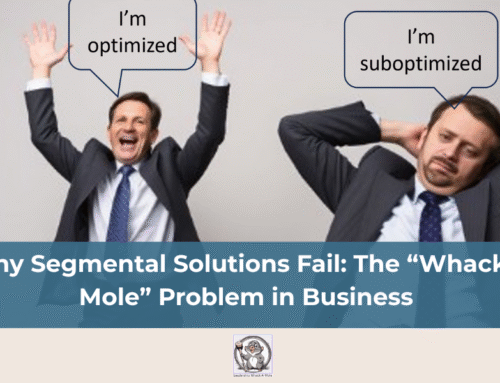
Adaptable Motivation –Expectancy Theory
By Ric Shriver
As leaders charged with facilitating change, new initiatives, and the day-to-day smooth operations of the functions and areas we have been tasked with overseeing, we are constantly challenged by the question “what motivates people to do what we want and need them to do?” The answer to that question, as we so often cite in Leadership Whack-A-Mole: Actionable Strategies for Leadership Challenges, is “it depends!” Don’t you hate to hear that?
People are all unique, driven by different motives depending on a multitude of factors which are not limited to genetic predispositions, previous experiences, personal values, perceptions of the work environment, and perceptions of the people they work with and for. There is no “APP”, no field guide, no job aid, and no prescriptive way for us as leaders to know exactly how to instill higher levels of motivation and engagement with the people we have been charged with leading.
So, what are we to do? I believe the answer lies in our innate desire to demonstrate our own commitment to the mission, vision, and values of our respective businesses. As leaders, we must affirm and picture the kind of work environment that supports the culture our mission, vision, values and strategic priorities thrive on. The question then focuses on the descriptions of the kind of culture and work environment that are regularly reinforced by a leadership team that demonstrates a belief in and commitment to that culture.
There have been numerous theories of motivation espoused by many well-known authors and behavioral scientists over the past 100 years. And I believe that many of those theories hold some value and some level of consistency as we seek to understand the complexities of human motivation. If human motivation is unique to the individuals we are striving to lead, then as leaders we must do all we can to connect with, understand, and listen to the people we lead.
One of the most practical and easily understandable models of human motivation I have leaned on over the past several years is Vroom’s Expectancy Theory. It is a motivation theory proposed by Victor Vroom, which posits that an individual’s motivation is influenced by her/his expectations regarding the outcomes of her/his actions. The theory comprises three key components:
Expectancy: The belief and assessed probability that effort will lead to the desired performance. Simply stated, the confidence level an individual has will be the most important factor driving personal performance!
Instrumentality: The belief that performance will lead to specific outcomes or rewards, rewards that possess unique value for the individual(s) being led.
Valence: The value or importance an individual assigns to the expected outcomes.
This theory emphasizes that motivation is a result of rational calculation, where individuals assess the likelihood, or probability, of achieving their goals based on their efforts and the collective rewards they anticipate receiving. But the most important factor in Vroom’s model is the first factor – the “expectancy” or probability assessed by the individual that he/she can perform the action or task in question.
For example, if you ask one of the members of your team to prepare a project plan for a particular initiative, her/his motivation might look like this:
Motivation = Probability or Expectancy (.75) x ∑ i (belief = .9) x v (value placed on reward (10)
So, in this example, the team member has a relatively high level of confidence or belief in her/his ability to complete the project plan (.75 probability on a scale of 0-.99), she/he has trust that the promised reward (a promotion!) will result if the plan is completed and presented successfully.
Given the importance of expectancy, probability, and confidence we aspire to see in the people we lead, it becomes an imperative for us as leaders to 1) clearly define the type of people and characteristics who will comfortably perform in the roles we have defined; 2) recruit and select the people who will be the best “fits” for those roles; 3) provide for a thorough and prioritized orientation and onboarding process for the people we select in order to instill a high level of confidence as soon as possible; and 4) continuously reinforce the expected performance for the selected individuals via focused, well-targeted coaching and reinforcement for strong performance.
In summary, people will be motivated if…
- They believe they can accomplish the task
- They believe that they will receive a reward for accomplishing the task
- They value the reward that they get
- They see the reward as fair.
As leaders we must seek to lead with empathy and understanding, making every effort to connect with the people we lead through active, empathetic listening and through the consistent demonstration of respect, dignity, and fairness. We must keep these skills refined as we regularly create and sustain vision, alignment, and execution for results in our respective leadership roles.

Adapted from: Leadership Whack-A-Mole: Actionable Strategies for Leadership Challenges
© 2024 Ric Shriver and Jeff Fierstein.



